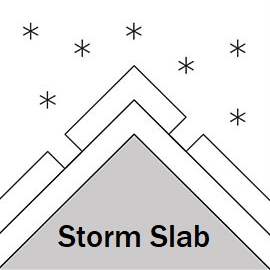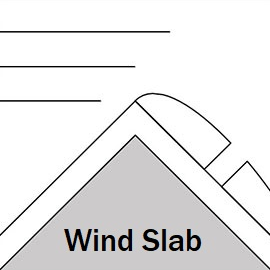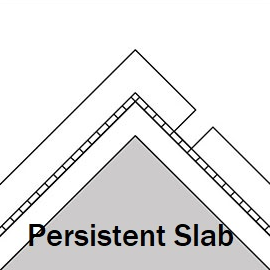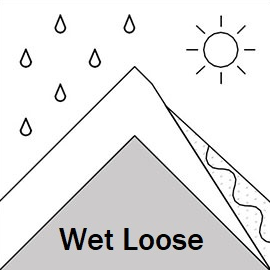Gudauri
Natural avalanches are unlikely, human-triggered avalanches are possible. Small avalanches in specific areas, or large avalanches in isolated areas.
The recent snow has formed storm and wind slabs that need a few days to stabilize. In higher elevations, these slabs bond poorly where the underlying snow is dry and facetted. A persistent weak layer inside the snow remains a concern. While there have been no reports of active activity on this layer, it is there and may be triggered by steep terrain, a large additional load, or a wind/storm slab avalanche. As before: "Moderate (2) hazard does not mean low hazard!"
Forecast issued at: 8 March 2024 08:00
Forecast valid until: 10 March 2024 08:00
Forecaster: Peter S
High Alpine
> 2600m
2 Moderate
Heightened avalanche conditions on specific terrain features. Evaluate snow and terrain carefully; identify features of concern.
Alpine
2000m - 2600m
2 Moderate
Heightened avalanche conditions on specific terrain features. Evaluate snow and terrain carefully; identify features of concern.
Sub Alpine
< 2000m
2 Moderate
Heightened avalanche conditions on specific terrain features. Evaluate snow and terrain carefully; identify features of concern.
Avalanche Problems
Storm Slab

Recent snow has fallen on top of weak, sugary, and non-cohesive snow crystals at the surface. This new snow may bond poorly with underlying, faceted/sugary snow at higher elevations, and wide slab avalanches could be triggered on the sugary snow. It might take a few days for this problem to improve. This snow will settle and bond faster in lower elevations (below about 2500 m) with warmer temperatures.
| Sensitivity | The specific avalanche problem type is reactive to human rider triggers. Easy to trigger with ski cut. |
| Distribution | Specific areas, with common characteristics. Evidence for instabilities exists, but it is not obvious and finding it requires careful observations. |
| Time of Day | All day |
| Trend | Deteriorating |
| Confidence | Moderate |
Wind Slab

Winds starting S and changing to NW / W on Friday can create fresh wind slabs on the lee side ridges, which will take a few days to stabilize. Due to variable winds, these lee areas can cover several aspects.
| Sensitivity | The specific avalanche problem type is reactive to human rider triggers. Easy to trigger with ski cut. |
| Distribution | Specific areas, with common characteristics. Evidence for instabilities exists, but it is not obvious and finding it requires careful observations. |
| Trend | Deteriorating |
| Confidence | Moderate |
Persistent Slab

Weak, facetted snow layers have been found around buried mid-pack crusts, in areas with shallow snow depth, and around recent melt-freeze and wind crusts. These problems may be worse in the north of the region where the snow is shallower. Note that surface wind or storm slab avalanches may trigger this weak layer layer layer.
| Sensitivity | The specific avalanche problem type is difficult to trigger with a human rider. |
| Distribution | A few, isolated locations; evidence for instabilities is rare and hard to find. |
| Time of Day | All day |
| Trend | No change |
| Confidence | Moderate |
Loose Wet

Mild temperatures and direct solar radiation increase the likelihood of small wet-loose avalanches, both skier-trigger and natural, especially from mid-day onwards and in the afternoon.
| Sensitivity | The specific avalanche problem type is reactive to human rider triggers. Easy to trigger with ski cut. |
| Distribution | Specific areas, with common characteristics. Evidence for instabilities exists, but it is not obvious and finding it requires careful observations. |
| Time of Day | All day |
| Trend | Deteriorating |
| Confidence | Moderate |
Recent Avalanches and Snowpack
Recent avalanche activity:
4 March: wind slab , skier-triggered, W-NW aspect, 2900-2950 m (high alpine zone). 3 March: Several skier-triggered loose dry avalanches, size 1, E-NE aspect, elevation approx. 2800 - 2900 m (high alpine zone)
Glide slabs continue to be active on multiple aspects (more commonly E, S and W) below about 2600 m, some up to size 2. These can release at any time - if you see cracks in the snow, do not stop under these areas!
Snowpack:
About 20 to 30 cm of new snow has fallen during the last two days under southerly winds. This snow has fallen on about 10 - 20 cm of low-density, faceted surface snow in shady places, and a poor bond is expected. Facetted snow was recently found around buried crusts and weak layers can be found deeper in the snowpack in some places, especially on N aspects at higher elevations where the snow is shallow - e.g. a facet layer down 60 cm was reactive in recent instability tests on a NE aspect at 3000 m.
Weather
Sunny and clear weather, with temperatures ranging from -4 to -14 degrees on Saturday and Sunday, and light to moderate SW winds.
Disclaimer
Our avalanche forecasters are internationally qualified and experienced professionals, and data is provided by skilled observers. We encourage you to make your own observations and decisions, without relying solely on our forecast, since any forecast is a generalised 'best guess', and in certain cases it might be inaccurate. We can not be held liable for any actions you take in the backcountry that may result in injury, loss or death.